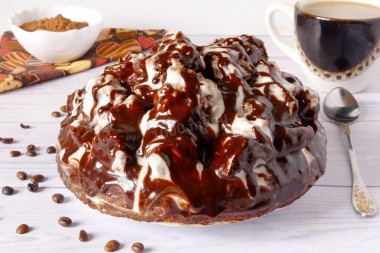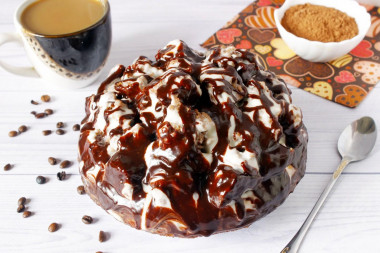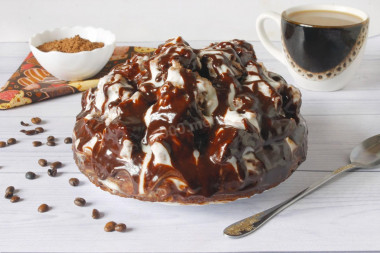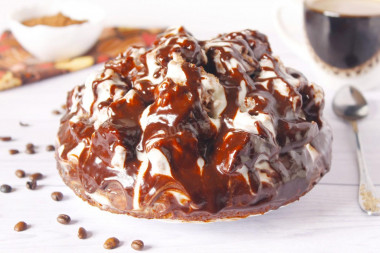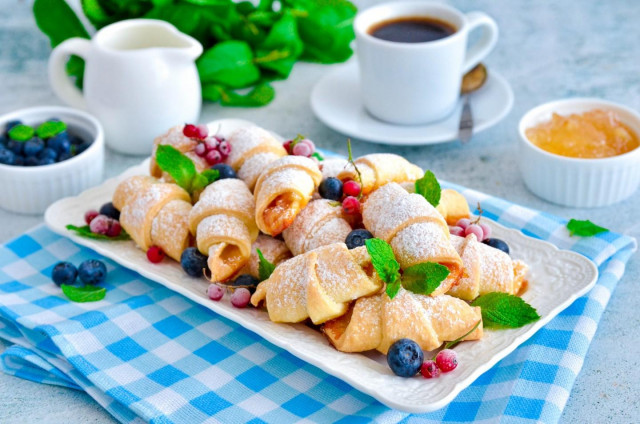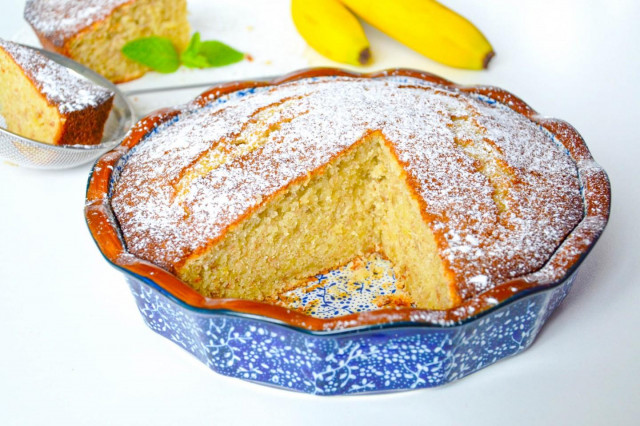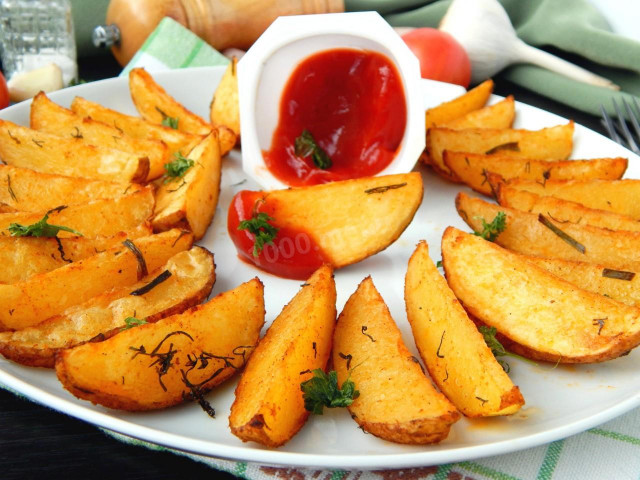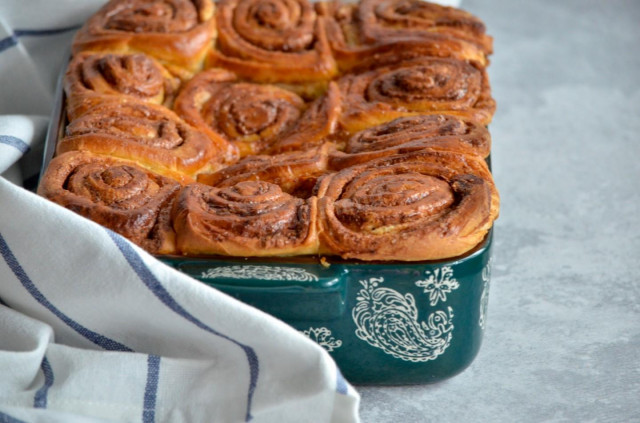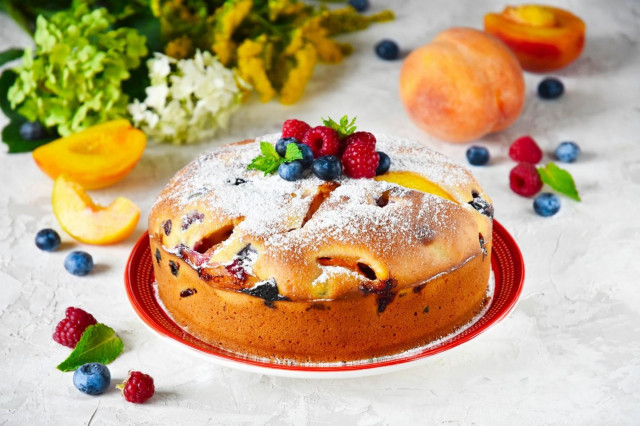Composition / ingredients
Step-by-step cooking
Step 1:
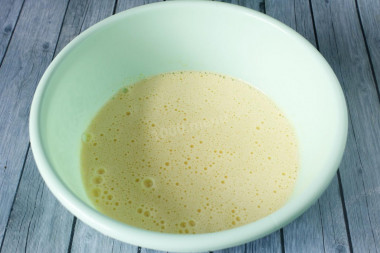
How to make a classic Count Ruins cake? Prepare the products. In a deep bowl, pour the raw eggs and add sugar. Beat the eggs with sugar with a mixer at high speeds for about 3-4 minutes until the sugar dissolves, as well as increasing and whitening the mass.
Step 2:
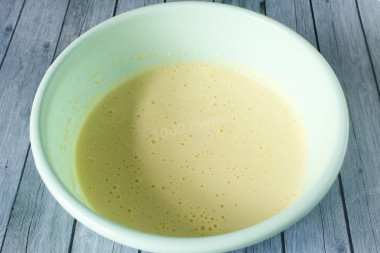
Add sour cream to the bowl and mix with a mixer at low speed until a homogeneous mass is formed.
Step 3:
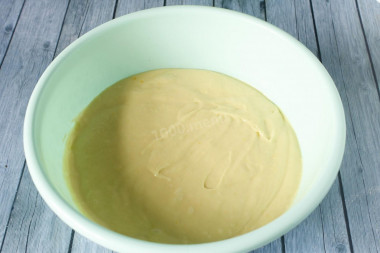
Pour in the sifted flour (set aside 1 tablespoon, we will add it later) and baking powder, mix with a mixer at low speed. The dough is ready. It is neither thick nor liquid in consistency.
Step 4:
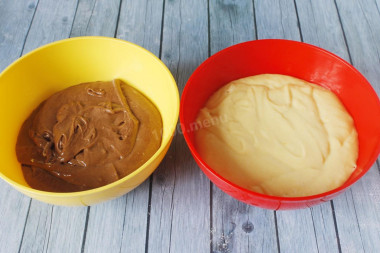
Divide the dough into 2 equal parts. Pour cocoa powder into one part of the dough through a strainer and mix with a spoon until smooth. In the second part of the dough, add the previously postponed spoonful of flour.
Step 5:
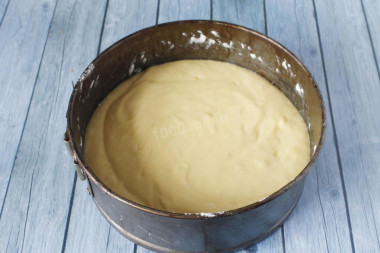
Take a round baking dish with a diameter of 20 cm. Cover the bottom with parchment paper, cutting out a circle of suitable size. Lubricate the mold with butter. For baking a white cake, it is better to use a larger mold than for chocolate.
Step 6:
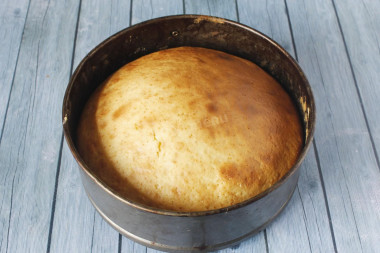
Bake the cake in the oven at 180 degrees for 15 minutes. Determine the time and temperature by your oven. Remove the cake from the mold.
Step 7:
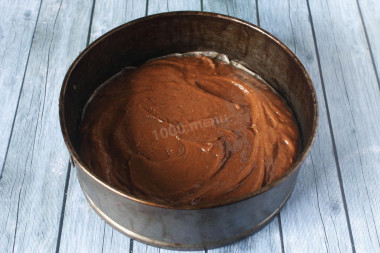
For a chocolate cake, take a round one with a diameter of 20 cm. If you do not have a mold of this diameter, use the mold in which the white cake was baked. Also cover the bottom of the mold with parchment, grease it with butter and pour the dough into the mold.
Step 8:
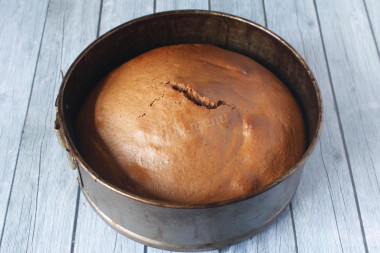
Bake the chocolate cake for 15 minutes at 180 degrees. Again, determine the time and temperature by your oven. Remove the cake from the mold.
Step 9:
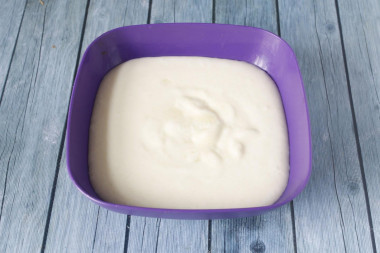
For the cream, whisk the sour cream with sugar using a mixer.
Step 10:
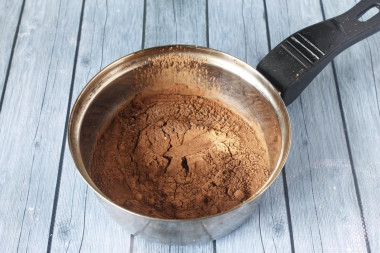
For the glaze, mix cocoa powder, sugar and milk in an iron bowl (since everyone has different spoons, it is better to add 5 tablespoons of milk first, and the remaining 2 spoons - if necessary during the boiling process, the glaze should not be too liquid, but not too thick).
Step 11:
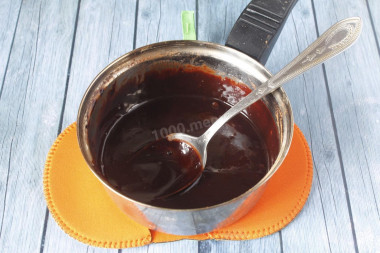
Boil the glaze over low heat with constant stirring for 4-7 minutes.
Step 12:
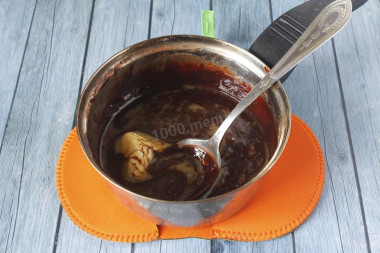
Add butter to the hot glaze and stir until it completely dissolves. This glaze will thicken a little after cooling, but it will not harden. Be sure to cool the glaze well so that it thickens a little!
Step 13:
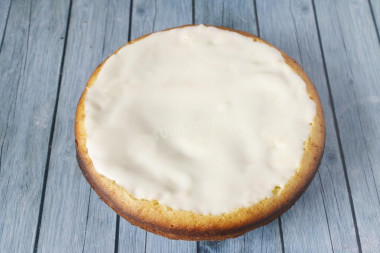
Cut off the top of the white cake (just align it a little, you can add the pieces to the chocolate top) and smear with cream.
Step 14:
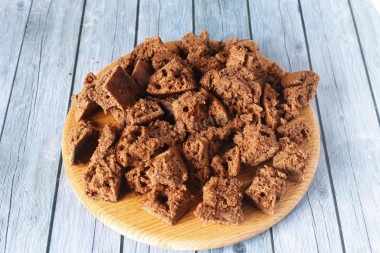
Cut the chocolate cake into 2 pieces lengthwise and cut into small cubes.
Step 15:
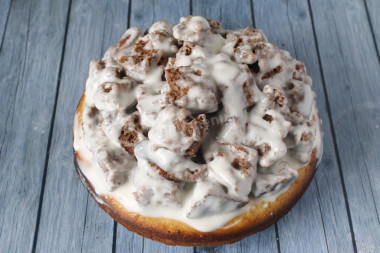
Dip the chocolate pieces alternately into the cream and stack them on a white cake slide. I didn't fit all the pieces, so I gave advice that the white cake should be larger than the chocolate one.
Step 16:
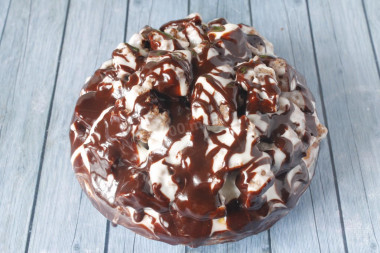
Top the cake with the remnants of the cream and randomly pour it with a thin stream of glaze with a spoon, trying to fill the surface not with a solid layer, but as in the photo. Let the finished cake soak for 2-3 hours.
After impregnation, the cake became as tender and amazing as possible. My family and I were absolutely delighted with him!
Be prepared for the fact that flour may need more or less than indicated in the recipe. Focus not on the amount of flour, but on the desired consistency of the dough. To avoid mistakes, read about flour and its properties!
Keep in mind that everyone's ovens are different. The temperature and cooking time may differ from those specified in the recipe. To make any baked dish successful, use useful information about the features of ovens !
Important! The size of the mold must match the number of ingredients. If you do not have a shape of a diameter suitable for the recipe or you want to bake a pie or a cake of a larger or smaller size, an article about how to make the right calculations and not make a mistake will help, how to choose the shape of the desired diameter .
All the secrets of making a tall, beautiful, lush sponge cake read the article about the biscuit dough .
Caloric content of the products possible in the composition of the dish
- Whole cow's milk - 68 kcal/100g
- Milk 3.5% fat content - 64 kcal/100g
- Milk 3.2% fat content - 60 kcal/100g
- Milk 1.5% fat content - 47 kcal/100g
- Concentrated milk 7.5% fat content - 140 kcal/100g
- Milk 2.5% fat content - 54 kcal/100g
- Sour cream with 30% fat content - 340 kcal/100g
- Sour cream of 25% fat content - 284 kcal/100g
- Sour cream with 20% fat content - 210 kcal/100g
- Sour cream of 10% fat content - 115 kcal/100g
- Sour cream - 210 kcal/100g
- Chicken egg - 157 kcal/100g
- Egg white - 45 kcal/100g
- Egg powder - 542 kcal/100g
- Egg yolk - 352 kcal/100g
- Ostrich egg - 118 kcal/100g
- Whole durum wheat flour fortified - 333 kcal/100g
- Whole durum wheat flour, universal - 364 kcal/100g
- Flour krupchatka - 348 kcal/100g
- Flour - 325 kcal/100g
- Granulated sugar - 398 kcal/100g
- Sugar - 398 kcal/100g
- Butter 82% - 734 kcal/100g
- Amateur unsalted butter - 709 kcal/100g
- Unsalted peasant butter - 661 kcal/100g
- Peasant salted butter - 652 kcal/100g
- Melted butter - 869 kcal/100g
- Cocoa powder - 374 kcal/100g
- Baking powder - 79 kcal/100g


